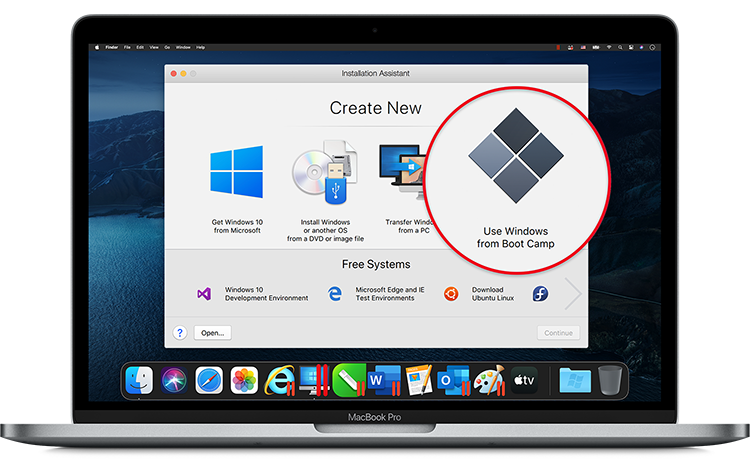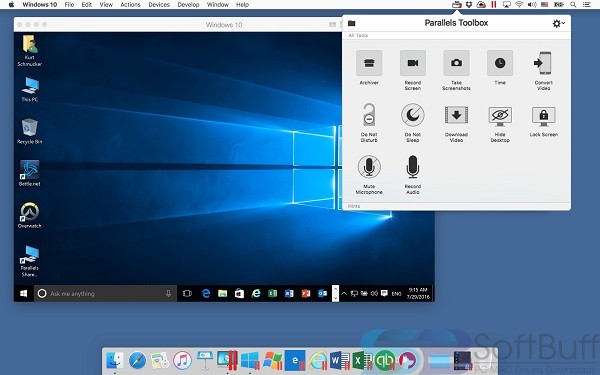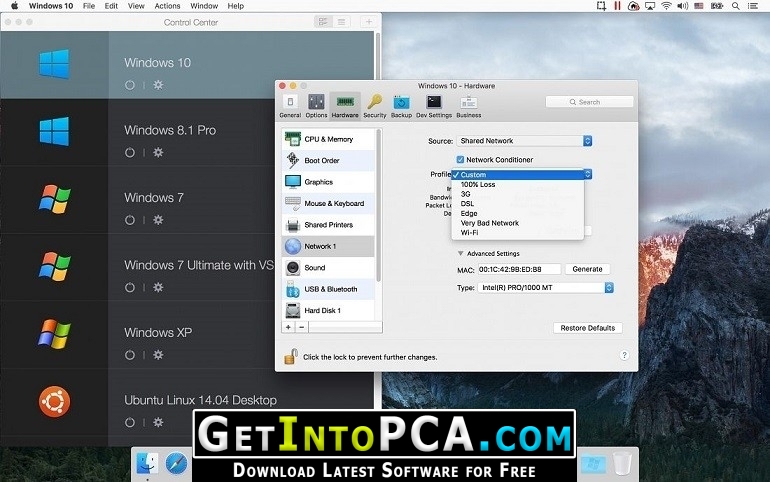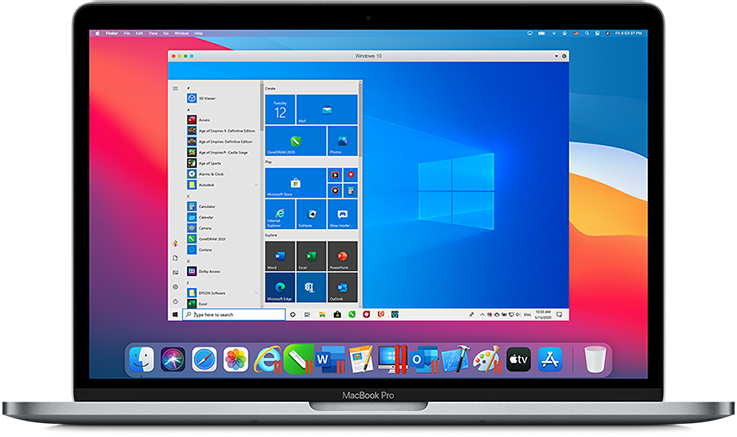- Download Parallels Desktop Business Edition 16.0.1 for Mac full version program setup free. Parallels Desktop Business Edition v16 is a fantastic program that enables you to run Windows applications on Mac without rebooting. Parallels Desktop Business Edition 16.0.1 for Mac OS X Review.
- Parallels for Mac Free Download. To solve this problem the virtualization utilities like Parallels Desktop are designed to solve. The Parallel desktop and VMware Fusion 8 are the popular virtualization software for OS X. Parallels Desktop 10 for Mac is the most powerful solution for running Windows applications on a Mac.
- Aug 17, 2020 Free to try Parallels Mac Version 16.0.0. Shut down Mac OS X and endure a full OS start-up cycle to access a important application, Parallels Desktop for Mac empowers users with the ability to. Mar 17, 2020 Parallels Desktop 15 Full Crack – Torrent Download.
Using Parallels Workstation? To regain control of the mouse in OS X (freeing it from the virtual machine), the default key command is Control-Option (they call it Control-Alt), and then you have to move the window to do what you wanted to do on your Mac.
Editor’s Note: This is part two in our five-part series looking at the best software for running Windows on Intel-based Macs.
Parallels ( ) came out in beta form in April of last year, not long after Apple released the first Intel Macs. Since then, the software has been greatly improved through a seemingly constant stream of betas, release candidates, and officially released updates. (This article is based on build 3170, Release Candidate 3; Parallels says that there are no substantial differences between that build and the official release, beyond some bug fixes.) Today, this $80 program is the most-refined option for running a full Windows installation next to OS X on an Intel Mac. (Parallels also supports nearly any non-Apple operat-ing system you can think of, from Windows 3.11 through Vista, Linux, FreeBSD, OS/2, Solaris, and even good old MS-DOS).
Installation

Parallels has accomplished something amazing: it’s made it simpler to install Windows inside a virtual machine on a Mac than it is to install Windows on a “real” PC. Using the Windows Express setup assistant, you can install Windows XP or Vista in a couple of mouse clicks. You type your product key, name, and organization on one screen, and then Parallels takes over. Anywhere you’d typically have to interact with the Windows installer, Parallels does the job for you. Free dlna server for mac.
After installing Windows, you launch your new virtual machine and run the Parallels Tools installer (in the Action menu). Pci express ssd for mac pro. Parallels Tools adds a number of features that ease the integration of Windows with OS X, such as the ability to move your mouse seamlessly from Parallels to Mac OS X and back again.
The process is just a bit more complicated if you want to install other operating systems. You use File: New to open the OS Installation Assistant, and tell it to create a Custom virtual machine. On the next screen, you select the type of OS (Linux, OS/2, and so on), as well as the specific version (Red Hat Linux, OS/2 Warp 4, and so on) you want to install. You’ll then have to specify a memory allocation and drive-space setup for your virtual machine, and then start the installation—you can install from CDs or from a disk image.
Software support
Assuming that you’re using Parallels to run Windows, you’ll want to check out Parallels’ Coherence mode as soon as you can (see “Coherence Mode”). It’s a way of configuring Parallels so the Windows OS itself is hidden: all you see is an application window—which happens to belong to a Windows application—on your OS X desktop. Those apps have their own resizable windows, their icons appear in OS X’s Dock, and the Windows taskbar is present along the bottom of the screen (though you can drag it to any edge, just as you can when running Windows natively). When running Parallels in Coherence mode, it’s easy to forget you’re even running the Windows OS; it’s more like you’re running programs that don’t look like the rest of your OS X apps.
Further easing integration, Parallels supports full drag and drop between the Windows and OS X environments. You can copy a folder of files from one environment to the other, add items to the taskbar in Coherence mode, and even drop documents onto Windows’ application windows.
Download Parallels Mac Os X Free
File browsers for mac os x. At the other extreme, you can make your Mac look like it’s solely a Windows machine simply by switching to full-screen mode. In full-screen mode, the Mac OS is completely hidden. When you want to get back to your native OS, just press option-return and you’re back in windowed mode.
In addition to creating this OS transparency, Parallels runs Windows apps amazingly well. It will run nearly any Windows program you throw at it, with performance that’s nearly as good as you’d get on a similarly configured native Windows box. (You can also run Windows XP from a Boot Camp partition—meaning that you need only one copy of Windows XP.) I say nearly because Parallels can’t yet utilize both cores in the Core Duo chips. So if you’re running an application that’s particularly CPU-intensive, it’ll take a bit of a performance hit. Also, Parallels doesn’t yet offer accelerated graphics, so many games are out of the question. And Parallels won’t run 64-bit Windows, but that’ll be a problem for only a small subset of users.
For everything else, such as Microsoft Office, Quicken QuickBooks, Adobe Photoshop, and pretty much any other application I tested, Parallels works, and works well. Performance is nice and snappy—in fact, it’s the snappiest of the four programs I tested (see “How They Compare: Virtualization Software”). Even playing back DVDs works reasonably well. I wasn’t able to get Windows Media Player to work (it kept telling me I needed an MPEG-2 codec), but I was able to use the free VLC video player to play Pirates of the Caribbean 2 (see “Playing DVDs”). There was some stuttering of the sound and the occasional mild picture hiccup, but overall, the experience was much better than I was expecting.
Hardware support
When Parallels first came out, its support for USB devices wasn’t great. Things have improved since then. It now supports USB 2.0, and more devices work. I had no trouble getting Windows XP Pro to recognize a 1GB memory stick; USB hard drives work, too. I was even able to use my Wacom Intuos 2 graphics tablet. You may still run into problems with things such as USB dongles, which some programs use for copy protection, but most other USB devices should work just fine.
Networking support is good; I had no issues printing to a networked laser printer, and I was able to see the other Macs on the household network.
Parallels For Mac Download


What hardware won’t work with Parallels? Pretty much anything that connects via FireWire, Bluetooth, or ExpressCard. (The main exception is FireWire drives that have been mounted in OS X.) If you have peripherals that rely on these technologies and that need access to them in Windows, you should consider using Boot Camp. Also, Parallels can’t take advantage of both cores on Core Duo chips. In my experience, that didn’t interfere with performance much, but if you have processor-intensive Windows apps, it might.
Who it’s good for
With its excellent application support, well-integrated Coherence mode, drag-and-drop capabilities, and overall level of performance, Parallels is a great match for people who need to run the full Windows OS on their Macs— or people who’d like to experiment with other operating systems, such as Linux. But if you need accelerated 3-D graphics support or have FireWire and Bluetooth devices you need to use in Windows, look to Boot Camp.


Parallels For Mac Reviews
Parallels Desktop for Mac
[ Senior Editor Rob Griffiths runs theMacOSXHints.comWeb site. ]
Coherence Mode: With Parallels’ new Coherence mode, Internet Explorer 7 and Microsoft Word (running in Windows) integrate seamlessly with the Finder and Font Book.Playing DVDs: You can watch (and burn) DVDs in Parallels—if you use VLC and don’t mind a little stuttering. The Windows Media Player complained about a missing codec.